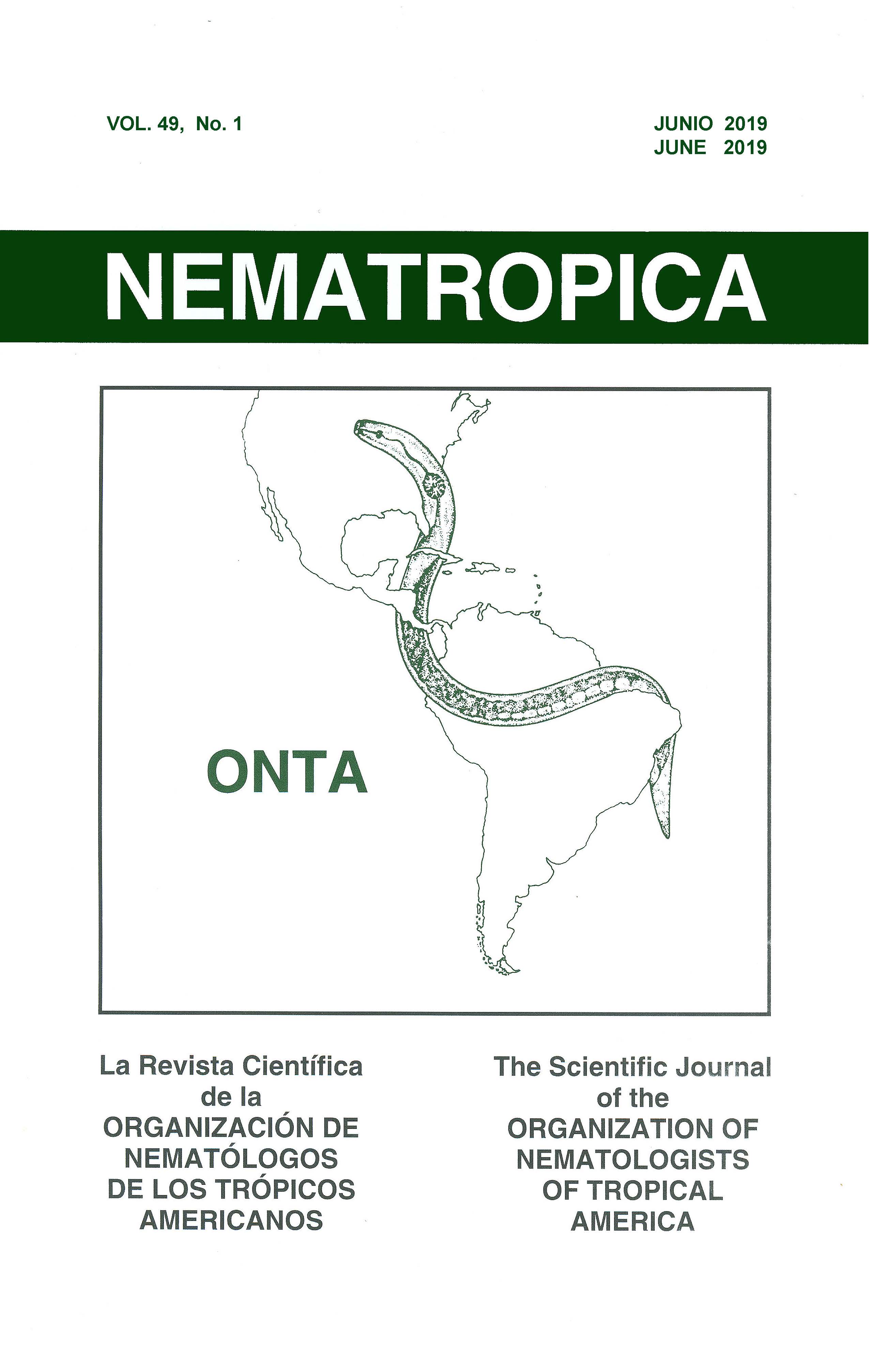DISTRIBUTION OF MELOIDOGYNE SPECIES (TYLENCHIDA: MELOIDOGYNIDAE) IN TOMATO CROP IN SINALOA, MEXICO
Abstract
Root-knot nematodes (RKN; Meloidogyne spp.) are one of the main constraints of tomato (Solanum lycopersicum) crops worldwide, and Sinaloa is one of the main producers of tomatoes in Mexico. There is little information on the distribution, prevalence, and incidence of RKN available in this crop and region. Identifying RKN species and estimating these epidemiology factors in Sinaloa are important for the design of specific strategies for RKN control. A total of 278 RKN samples from Los Mochis, Culiacan, La Cruz, and Escuinapa areas of Sinaloa were collected from tomato plants at production stage under greenhouse conditions to analyze the distribution, prevalence, and incidence of RKN. All samples were subsequently identified with morphological features of females and PCR amplification with species specific-primers. RKN were found in 100% of the surveyed greenhouses of tomato, confirming their widespread distribution and prevalence in this crop along the Sinaloa state. Based on molecular methods, M. enterolobii (Me) and M. incognita (Mi) were identified in the four regions. Incidence of Me was significantly greater than that of Mi and mixed infection (Me+Mi) occurred with 74.6% having Me, 16.8% having Mi, and 8.6% with both species of positive samples from all those analyzed. This information will enable tomato producers of this region to design and implement an appropriate control strategy for these RKN species.

